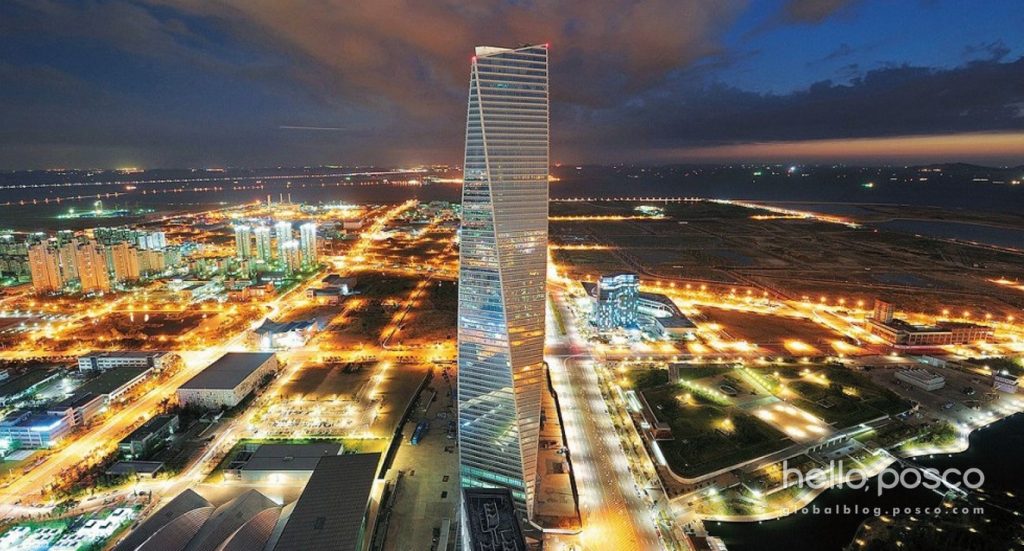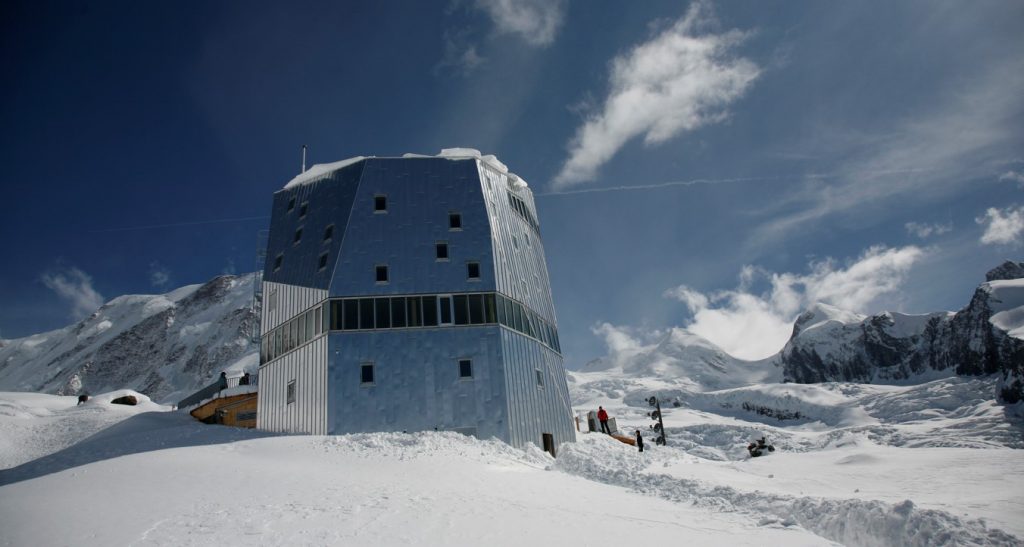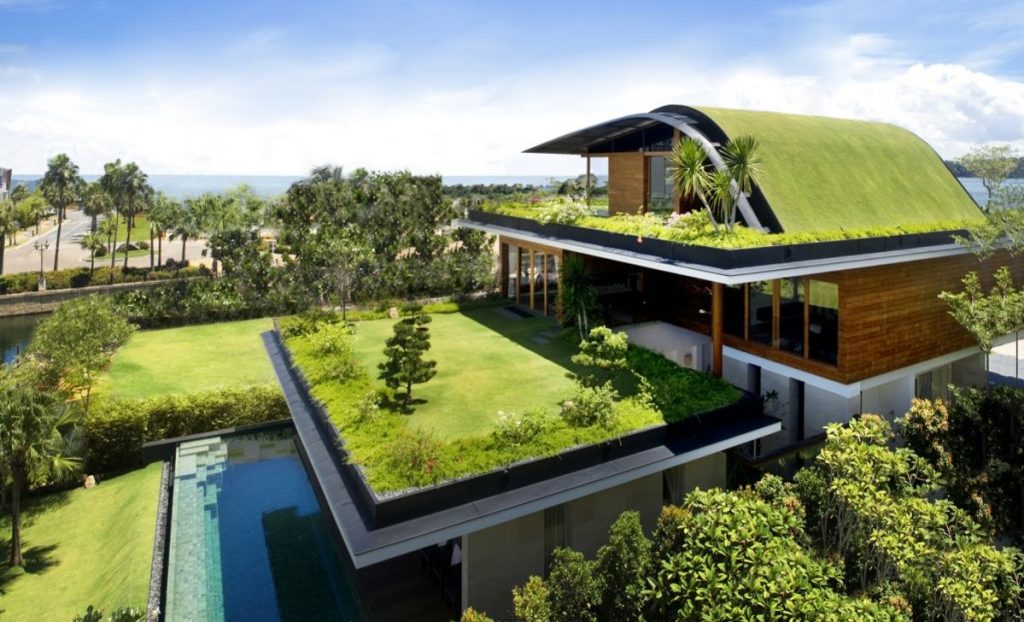Now, it is more crucial than ever for our buildings to be constructed with sustainability in mind, and to be powered by renewable energy in order to reduce our carbon footprint.
Both individuals and corporations must become more environmentally responsible, being mindful of the levels of waste water, trash and emissions produced both at home and in the office. Considering these factors in the architectural designs of the future, we can ensure a healthy and sustainable planet. Yet, a number of buildings are a step ahead and have already incorporated sustainability into their own designs, setting the precedent for future architectural endeavors. On this World Environment Day, let’s take a look at a few of them.
Northeast Asia Trade Tower (NEATT)
 Standing 68 stories tall, the Northeast Asia Trade Tower in Songdo International Business District, Incheon, is the tallest structure in South Korea. It is also the crown jewel of POSCO’s leading innovative technology, utilizing revolutionary features such as a 3D exterior design, a seismic force resisting system and high level security and anti-disaster measures.
Standing 68 stories tall, the Northeast Asia Trade Tower in Songdo International Business District, Incheon, is the tallest structure in South Korea. It is also the crown jewel of POSCO’s leading innovative technology, utilizing revolutionary features such as a 3D exterior design, a seismic force resisting system and high level security and anti-disaster measures.
Yet, NEATT, which is a mix of office spaces, a luxury hotel, serviced residences and retail stores, also serves as a model of sustainable design strategies, carefully balancing energy conservation, increased indoor environmental quality and occupant comfort. Its range of passive design strategies, which include daylighting, natural ventilation and energy efficient HVAC systems, as well as its eco-friendly, non-toxic construction materials, have ensured that the skyscraper is not only friendly to the environment, but to its human inhabitants, too.
Monte Rosa Hut
 Perched above the skiing mecca of Zermatt, Switzerland, the Monte Rosa Hut is a lodging space used by hikers in route to the summit of the same name on icy glacier treks. The five-story crystal-shaped building was constructed on stainless-steel foundations with a wooden spiral interior covered by a silver aluminum shell. During its construction, materials and workers were transported by train to Zermatt, requiring 3,000 helicopter trips.
Perched above the skiing mecca of Zermatt, Switzerland, the Monte Rosa Hut is a lodging space used by hikers in route to the summit of the same name on icy glacier treks. The five-story crystal-shaped building was constructed on stainless-steel foundations with a wooden spiral interior covered by a silver aluminum shell. During its construction, materials and workers were transported by train to Zermatt, requiring 3,000 helicopter trips.
The hut uses solar power for about 90 percent of its energy and heat requirements. Excess energy is stored in valve-regulated lead-acid accumulators, which ensure power in all kinds of weather. Large windows allow the sun to heat air inside the building, and melting glaciers in the area provide the lodge’s water supply, which is collected and stored in a nearby reservoir. (Image from http://bit.ly/1AJVsUa)
Meera Sky Garden
 Perhaps no other building on this list is as one with nature as the Meera Sky Garden in Sentosa, Singapore. This eye-catching, eco-friendly home was designed by Guz Architects, and it overlooks the island’s harbor.
Perhaps no other building on this list is as one with nature as the Meera Sky Garden in Sentosa, Singapore. This eye-catching, eco-friendly home was designed by Guz Architects, and it overlooks the island’s harbor.
Divided into four distinctive floors, each of which is covered with a grass roof, the home appears as if it is four separate houses, yet is still seamlessly connected by a natural element. Not only are these garden-like spaces visually pleasing, but the grassy roofs help to keep the interior temperatures at a minimum, saving energy. (Image from http://bit.ly/1ddeBTx)
Pixel
 While Pixel’s chaotic, colorful exterior is the first thing one might notice about the small office building in Melbourne, Australia, its sustainable design is what really makes it noteworthy. Some of its design innovations include a panel shade system that allows natural light into the office, while at the same time, reducing glare and heat. More impressively, Pixel utilizes wind turbines to generate its own electricity.
While Pixel’s chaotic, colorful exterior is the first thing one might notice about the small office building in Melbourne, Australia, its sustainable design is what really makes it noteworthy. Some of its design innovations include a panel shade system that allows natural light into the office, while at the same time, reducing glare and heat. More impressively, Pixel utilizes wind turbines to generate its own electricity.
As Australia’s first carbon neutral office building, Pixel was also the first building to ever be granted a perfect score on the country’s Green Star sustainability rating system. (Image from http://bit.ly/1JoxIpS)
Bank of America
 When the Bank of America building was erected in Manhattan, New York in 2009, it set the standard for all environmentally responsible buildings to come. Its base-to-roof insulating glass external structure enhances heat insulation while creating a large source of natural light, while the building’s extensive solar panels produce energy for the building.
When the Bank of America building was erected in Manhattan, New York in 2009, it set the standard for all environmentally responsible buildings to come. Its base-to-roof insulating glass external structure enhances heat insulation while creating a large source of natural light, while the building’s extensive solar panels produce energy for the building.
And the Bank of America knows how to save water. Its greywater system collects and recycles waste from sinks and water fountains into the refrigeration system, while its catchment systems collect and save around 45 inches of rain that fall on the site each year. Such sustainable features landed the skyscraper the LEED Platinum Award, the highest level of the internationally recognized green building rating system.
The Change Initiative
 In a city that is seemingly ever under construction, The Change Initiative (TCI), an eco-lifestyle shop that stocks everything from environmentally-conscious detergent to greywater recycling tools, sets itself apart from other buildings in Dubai.
In a city that is seemingly ever under construction, The Change Initiative (TCI), an eco-lifestyle shop that stocks everything from environmentally-conscious detergent to greywater recycling tools, sets itself apart from other buildings in Dubai.
Often noted as one of the most sustainable commercial buildings in the world, the majority of the materials used to create TCI are recyclable. The roof is coated with heat-reflective paint and is embellished with solar panels that generate about 40 percent of the building’s energy, while the building’s outer structure has three times the insulation of the average building. (Image from Gundeep Singh)
For more information about current worldwide green initiatives and for ways that you can “consume with care,” check out the World Environment Day website.
- Africa
- architecture
- Asia
- Australia
- bank of america
- building
- building design
- carbon
- construction
- eco-friendly
- energy
- environment-friendly
- evironment
- future
- global
- green
- Green Building
- Green Star
- gundeep singh
- international
- Korea
- LEED platinum Award
- manhattan
- Meera Sky Garden
- Monte Rosa Hut
- NEATT
- New York
- New York City
- Northeast Asia Trade Tower
- pixel
- POSCO
- skyline
- skyscraper
- structure
- sustainability
- sustainable
- sustainable building
- sustainable design
- TCI
- the change initiative
- World Environment Day
